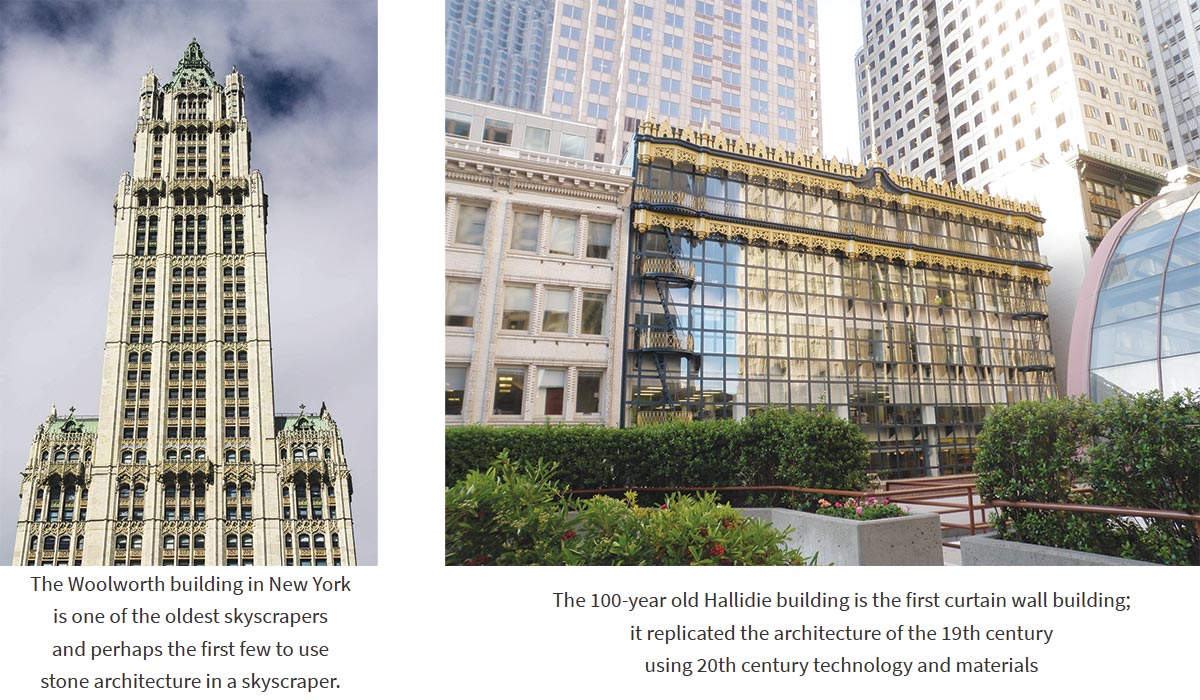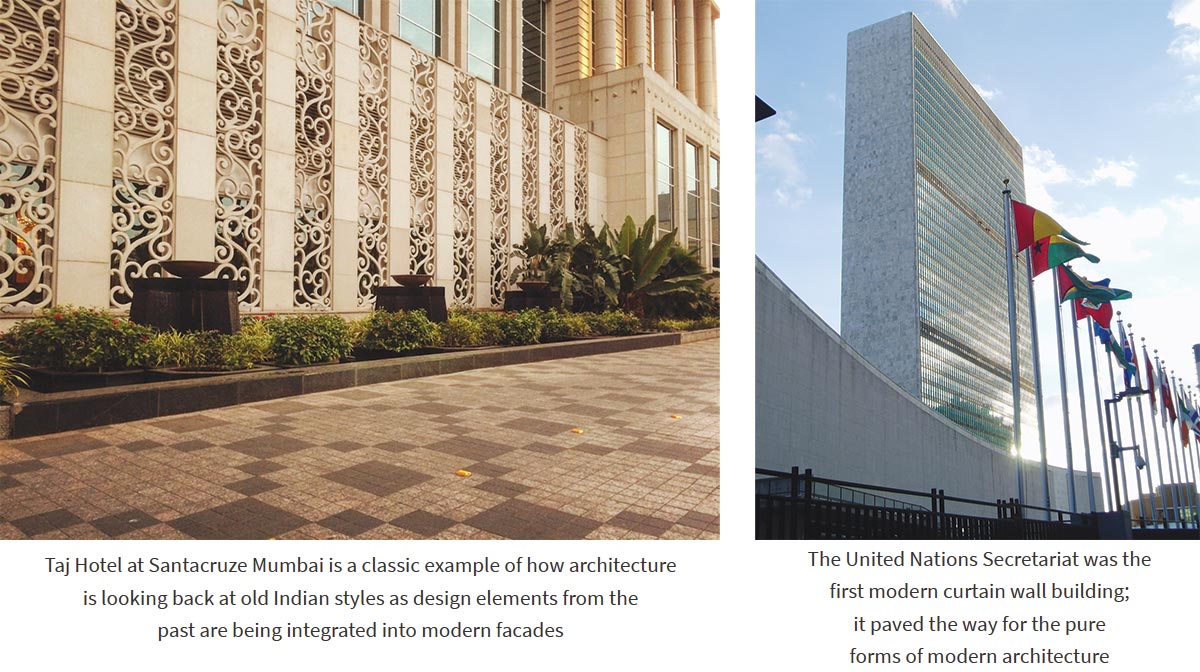
Stone masonry and timber architecture practiced for thousands of years made way for bricks and concrete, which were stronger, less bulky and required fewer manual skills. Bricks and concrete gave way to glass, aluminum and steel as these materials were fast to produce and build, less bulky, more accurate and (possibly) gave buildings a longer life (though not as much as stone). With industrialization and urbanization, skilled manpower and materials were in short supply, giving birth to new ideas to cater to the increasing demand. Thus, necessity became the mother of change!
Architecture has lost its creativity to machines. The construction industry churns out new products and new techniques every now and then, making it very dynamic. Perhaps, the time is right for re-cultivating traditional skills as hand crafted creations never fail to strike a chord.
 Victoria Memorial in Calcutta: Colonial, Islamic, Medieval, Roman, Gothic, and Renaissance architecture predominantly used stone and timber
Victoria Memorial in Calcutta: Colonial, Islamic, Medieval, Roman, Gothic, and Renaissance architecture predominantly used stone and timberTraditional architecture was hand built and hand crafted - a slow process that required a lot of patience and skill. But there were limitations as we could not build skyscrapers with this kind of architecture.
With the industrial revolution, the building industry began to use factory-produced materials, which were fast, economical and accurate, besides being a new concept and glittery too. Builders began to get better returns on their investment and clients began to prefer the new style of architecture. As more and more products began to roll out, architecture, which was predominantly a static design stream (primarily due to lack of material options), became dynamic, with rapid innovations in exterior finish materials and construction technologies.

Early curtain wall structures tried to replicate stone architecture and art deco buildings, but when architects started experimenting with this new concept, they conceived the straight face architecture. However, the stark contrast to the traditionally decorative style came with its own bag of criticism. But no one could ignore its speed and economy, and it soon spelt death for the old style of architecture.

When the hand-crafted industry made way for the machine made, the industry began to lose the hereditary line of craftsmen. Today, machines have replaced art and thereby killed the spirit and uniqueness of traditional hand-crafted architecture. The solution lies in designing architecture of the past using traditional design elements and integrating them with modern architecture through modern techniques.















